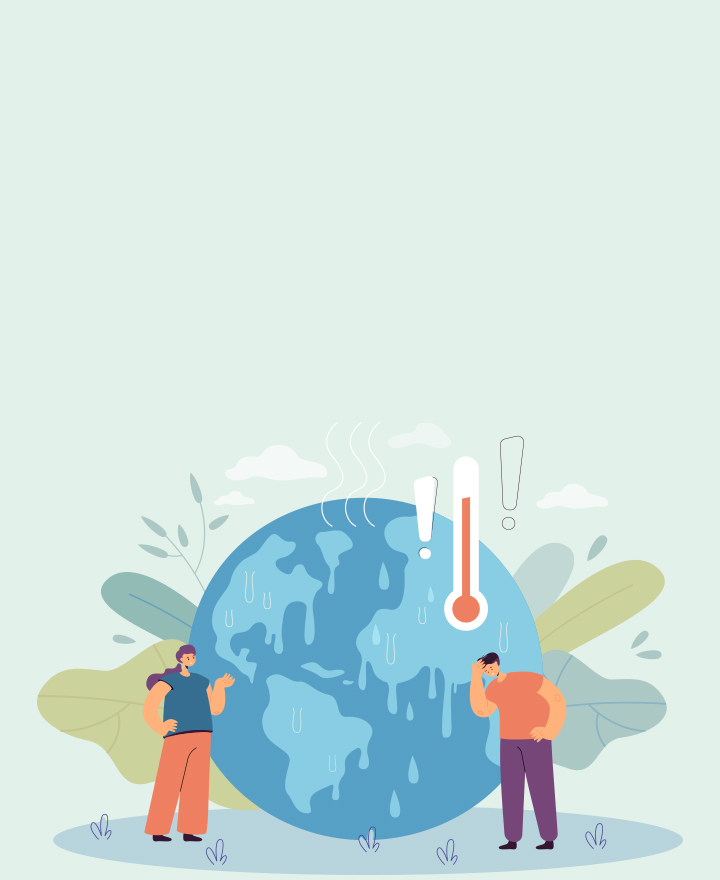

Heat Stroke vs Heat Exhaustion
Heat Stroke and Heat Exhaustion are both heat-related illnesses, but they differ in severity and symptoms. It’s important to recognize the signs and symptoms of both so as to take appropriate actions promptly to prevent serious complications. Read on to understand the difference between a heat stroke and heat exhaustion.
Difference Between a Heat Stroke and Heat Exhaustion
Here’s a comparison of Heat Stroke vs. Heat Exhaustion
| Feature | Heat Stroke | Heat Exhaustion |
| Body Temperature | High (usually above 104F or 40C) | Normal to slightly elevated |
| Skin Condition | Dry, hot, and flushed | Cool and moist |
| Symptoms | High body temperature, altered mental state, rapid heartbeat, rapid breathing, dry, hot and flushed skin, and lack of sweating | Heavy sweating, weakness, dizziness, nausea, headache, fainting, cool and moist skin, and muscle cramps |
| Cause | A life-threatening condition resulting from prolonged exposure to high temperatures or physical exertion in hot environments, where the body’s temperature regulation system fails. | Often occurs due to dehydration and loss of electrolytes from sweating during exposure to high temperatures or strenuous physical activity. |
| Sweating | Lack of sweating, despite heat | Excessive sweating |
| Breathing pattern | Rapid and shallow | Normal to rapid |
| Mental State | Altered with experience of confusion, agitation, and hallucinations | Alert and oriented |
| Prognosis | Can be life-threatening without immediate medical intervention | Generally reversible with prompt treatment |
Treatment – Heat Stroke vs. Heat Exhaustion
• Heat Stroke
This is a medical emergency. Seek immediate medical help and while waiting for help, move the person to a cooler place, remove excess clothing, and cool the body with cold compresses or immersion in cool water if possible. Do not give fluids by mouth if the person is unconscious.
• Heat Exhaustion
Move to a cooler place, rest, hydrate with water or electrolyte-rich fluids, and cool the body with cold compresses or a cool water shower. Seek medical attention if the symptoms persist worsen.
Conclusion
Understanding the difference between a heat stroke and heat exhaustion is crucial for recognizing the appropriate actions to take in cases of heat-related illnesses.
One of the important components of our overall wellness is also being financially secured. Healthcare emergencies can happen any time, but a good health insurance policy can protect you from such uncertain situations. To know more about Wellness and other health related tips, visit the wellness corner.
Source: healthline.com, medicalnewstoday.com
Disclaimer: This blog provides general information and discussions about health and related subjects. The information and other content provided in this blog, website or in any linked materials are not intended and should not be considered, or used as a substitute for, medical advice, diagnosis or treatment. Kindly contact your Doctor before starting a new medicine or health regime.
Related Articles
5 Home-Made Immunity Booster Drinks that You Must Have
Want to Boost Your Immunity? Here's a List of Superfoods to Keep Diseases at Bay
How to Boost Your Immune System and Stay Healthy
10 Important Tips for Exercising in Summer Heat
Benefits of Eating Curd in Summer: Beat the Heat
Published on May 15, 2024














 Health Insurance
Health Insurance  Travel Insurance
Travel Insurance  Car Insurance
Car Insurance  Cyber Insurance
Cyber Insurance  Critical Illness Insurance
Critical Illness Insurance
 Pet Insurance
Pet Insurance
 Bike/Two Wheeler Insurance
Bike/Two Wheeler Insurance  Home Insurance
Home Insurance  Third Party Vehicle Ins.
Third Party Vehicle Ins.  Tractor Insurance
Tractor Insurance  Goods Carrying Vehicle Ins.
Goods Carrying Vehicle Ins.  Passenger Carrying Vehicle Ins.
Passenger Carrying Vehicle Ins.  Compulsory Personal Accident Insurance
Compulsory Personal Accident Insurance  Travel Insurance
Travel Insurance  Rural
Rural